Jianwen Zhang
Phi-4-Mini Technical Report: Compact yet Powerful Multimodal Language Models via Mixture-of-LoRAs
Mar 03, 2025Abstract:We introduce Phi-4-Mini and Phi-4-Multimodal, compact yet highly capable language and multimodal models. Phi-4-Mini is a 3.8-billion-parameter language model trained on high-quality web and synthetic data, significantly outperforming recent open-source models of similar size and matching the performance of models twice its size on math and coding tasks requiring complex reasoning. This achievement is driven by a carefully curated synthetic data recipe emphasizing high-quality math and coding datasets. Compared to its predecessor, Phi-3.5-Mini, Phi-4-Mini features an expanded vocabulary size of 200K tokens to better support multilingual applications, as well as group query attention for more efficient long-sequence generation. Phi-4-Multimodal is a multimodal model that integrates text, vision, and speech/audio input modalities into a single model. Its novel modality extension approach leverages LoRA adapters and modality-specific routers to allow multiple inference modes combining various modalities without interference. For example, it now ranks first in the OpenASR leaderboard to date, although the LoRA component of the speech/audio modality has just 460 million parameters. Phi-4-Multimodal supports scenarios involving (vision + language), (vision + speech), and (speech/audio) inputs, outperforming larger vision-language and speech-language models on a wide range of tasks. Additionally, we experiment to further train Phi-4-Mini to enhance its reasoning capabilities. Despite its compact 3.8-billion-parameter size, this experimental version achieves reasoning performance on par with or surpassing significantly larger models, including DeepSeek-R1-Distill-Qwen-7B and DeepSeek-R1-Distill-Llama-8B.
Phi-3 Safety Post-Training: Aligning Language Models with a "Break-Fix" Cycle
Jul 18, 2024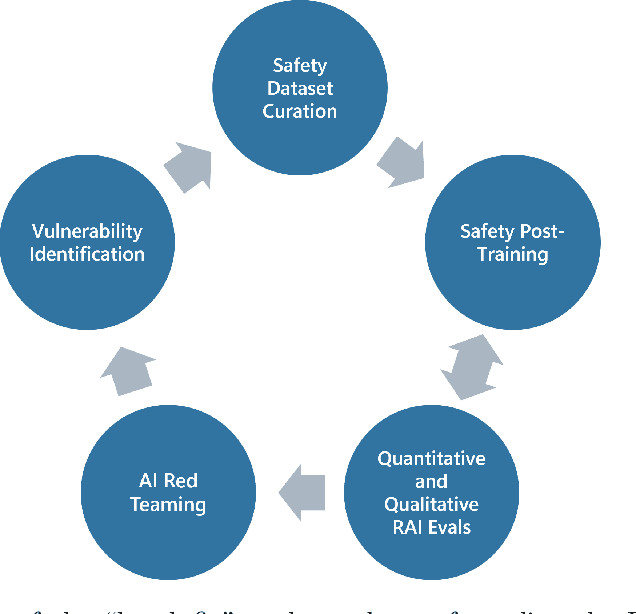


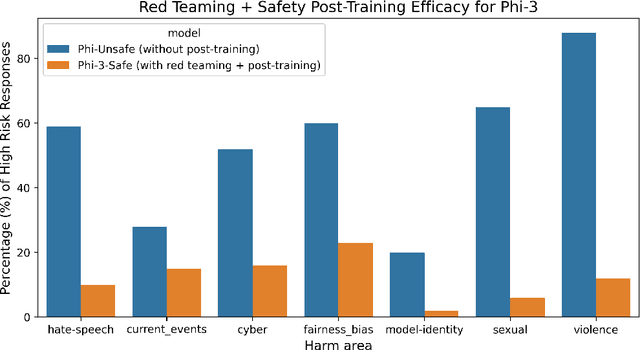
Abstract:Recent innovations in language model training have demonstrated that it is possible to create highly performant models that are small enough to run on a smartphone. As these models are deployed in an increasing number of domains, it is critical to ensure that they are aligned with human preferences and safety considerations. In this report, we present our methodology for safety aligning the Phi-3 series of language models. We utilized a "break-fix" cycle, performing multiple rounds of dataset curation, safety post-training, benchmarking, red teaming, and vulnerability identification to cover a variety of harm areas in both single and multi-turn scenarios. Our results indicate that this approach iteratively improved the performance of the Phi-3 models across a wide range of responsible AI benchmarks.
Phi-3 Technical Report: A Highly Capable Language Model Locally on Your Phone
Apr 23, 2024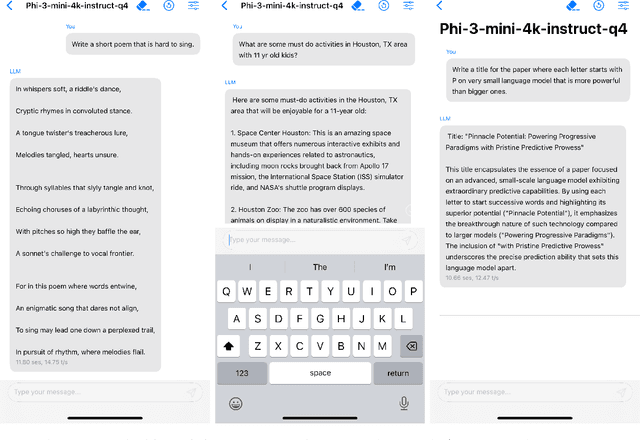

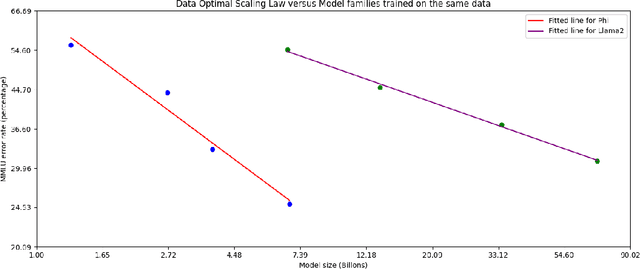
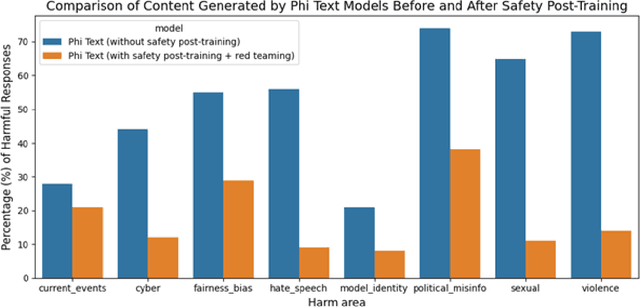
Abstract:We introduce phi-3-mini, a 3.8 billion parameter language model trained on 3.3 trillion tokens, whose overall performance, as measured by both academic benchmarks and internal testing, rivals that of models such as Mixtral 8x7B and GPT-3.5 (e.g., phi-3-mini achieves 69% on MMLU and 8.38 on MT-bench), despite being small enough to be deployed on a phone. The innovation lies entirely in our dataset for training, a scaled-up version of the one used for phi-2, composed of heavily filtered web data and synthetic data. The model is also further aligned for robustness, safety, and chat format. We also provide some initial parameter-scaling results with a 7B and 14B models trained for 4.8T tokens, called phi-3-small and phi-3-medium, both significantly more capable than phi-3-mini (e.g., respectively 75% and 78% on MMLU, and 8.7 and 8.9 on MT-bench).
Hybrid Ranking Network for Text-to-SQL
Aug 11, 2020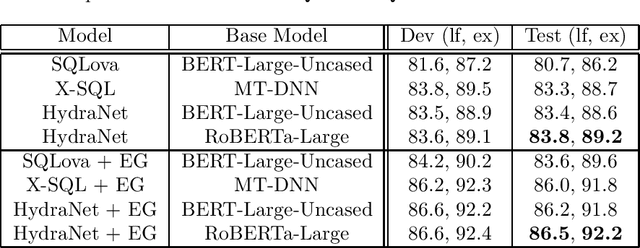

Abstract:In this paper, we study how to leverage pre-trained language models in Text-to-SQL. We argue that previous approaches under utilize the base language models by concatenating all columns together with the NL question and feeding them into the base language model in the encoding stage. We propose a neat approach called Hybrid Ranking Network (HydraNet) which breaks down the problem into column-wise ranking and decoding and finally assembles the column-wise outputs into a SQL query by straightforward rules. In this approach, the encoder is given a NL question and one individual column, which perfectly aligns with the original tasks BERT/RoBERTa is trained on, and hence we avoid any ad-hoc pooling or additional encoding layers which are necessary in prior approaches. Experiments on the WikiSQL dataset show that the proposed approach is very effective, achieving the top place on the leaderboard.
Relation Discovery with Out-of-Relation Knowledge Base as Supervision
Apr 19, 2019



Abstract:Unsupervised relation discovery aims to discover new relations from a given text corpus without annotated data. However, it does not consider existing human annotated knowledge bases even when they are relevant to the relations to be discovered. In this paper, we study the problem of how to use out-of-relation knowledge bases to supervise the discovery of unseen relations, where out-of-relation means that relations to discover from the text corpus and those in knowledge bases are not overlapped. We construct a set of constraints between entity pairs based on the knowledge base embedding and then incorporate constraints into the relation discovery by a variational auto-encoder based algorithm. Experiments show that our new approach can improve the state-of-the-art relation discovery performance by a large margin.
 Add to Chrome
Add to Chrome Add to Firefox
Add to Firefox Add to Edge
Add to Edge